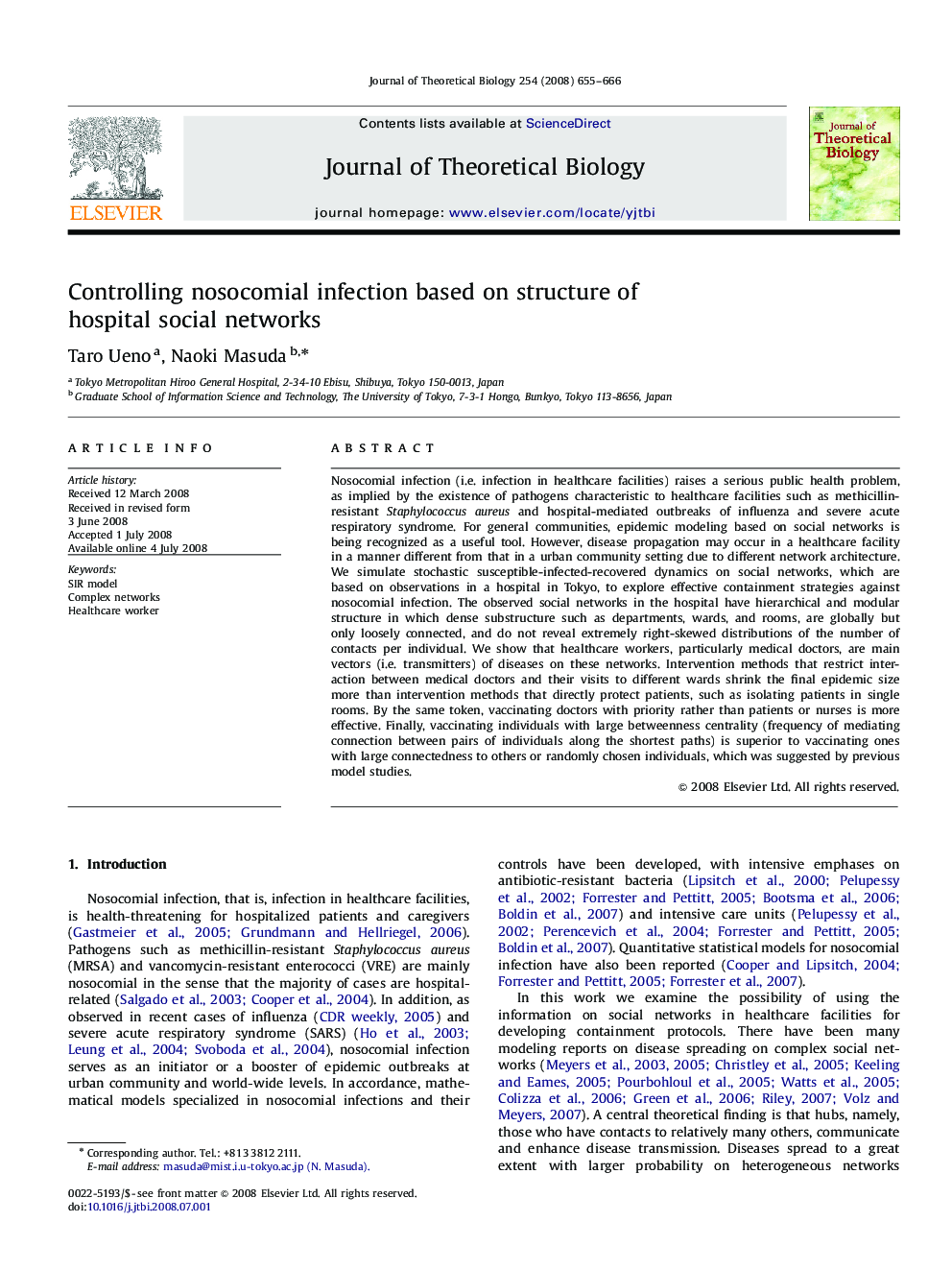| کد مقاله | کد نشریه | سال انتشار | مقاله انگلیسی | نسخه تمام متن |
|---|---|---|---|---|
| 6371675 | 1318979 | 2008 | 12 صفحه PDF | دانلود رایگان |
عنوان انگلیسی مقاله ISI
Controlling nosocomial infection based on structure of hospital social networks
دانلود مقاله + سفارش ترجمه
دانلود مقاله ISI انگلیسی
رایگان برای ایرانیان
کلمات کلیدی
موضوعات مرتبط
علوم زیستی و بیوفناوری
علوم کشاورزی و بیولوژیک
علوم کشاورزی و بیولوژیک (عمومی)
پیش نمایش صفحه اول مقاله

چکیده انگلیسی
Nosocomial infection (i.e. infection in healthcare facilities) raises a serious public health problem, as implied by the existence of pathogens characteristic to healthcare facilities such as methicillin-resistant Staphylococcus aureus and hospital-mediated outbreaks of influenza and severe acute respiratory syndrome. For general communities, epidemic modeling based on social networks is being recognized as a useful tool. However, disease propagation may occur in a healthcare facility in a manner different from that in a urban community setting due to different network architecture. We simulate stochastic susceptible-infected-recovered dynamics on social networks, which are based on observations in a hospital in Tokyo, to explore effective containment strategies against nosocomial infection. The observed social networks in the hospital have hierarchical and modular structure in which dense substructure such as departments, wards, and rooms, are globally but only loosely connected, and do not reveal extremely right-skewed distributions of the number of contacts per individual. We show that healthcare workers, particularly medical doctors, are main vectors (i.e. transmitters) of diseases on these networks. Intervention methods that restrict interaction between medical doctors and their visits to different wards shrink the final epidemic size more than intervention methods that directly protect patients, such as isolating patients in single rooms. By the same token, vaccinating doctors with priority rather than patients or nurses is more effective. Finally, vaccinating individuals with large betweenness centrality (frequency of mediating connection between pairs of individuals along the shortest paths) is superior to vaccinating ones with large connectedness to others or randomly chosen individuals, which was suggested by previous model studies.
ناشر
Database: Elsevier - ScienceDirect (ساینس دایرکت)
Journal: Journal of Theoretical Biology - Volume 254, Issue 3, 7 October 2008, Pages 655-666
Journal: Journal of Theoretical Biology - Volume 254, Issue 3, 7 October 2008, Pages 655-666
نویسندگان
Taro Ueno, Naoki Masuda,